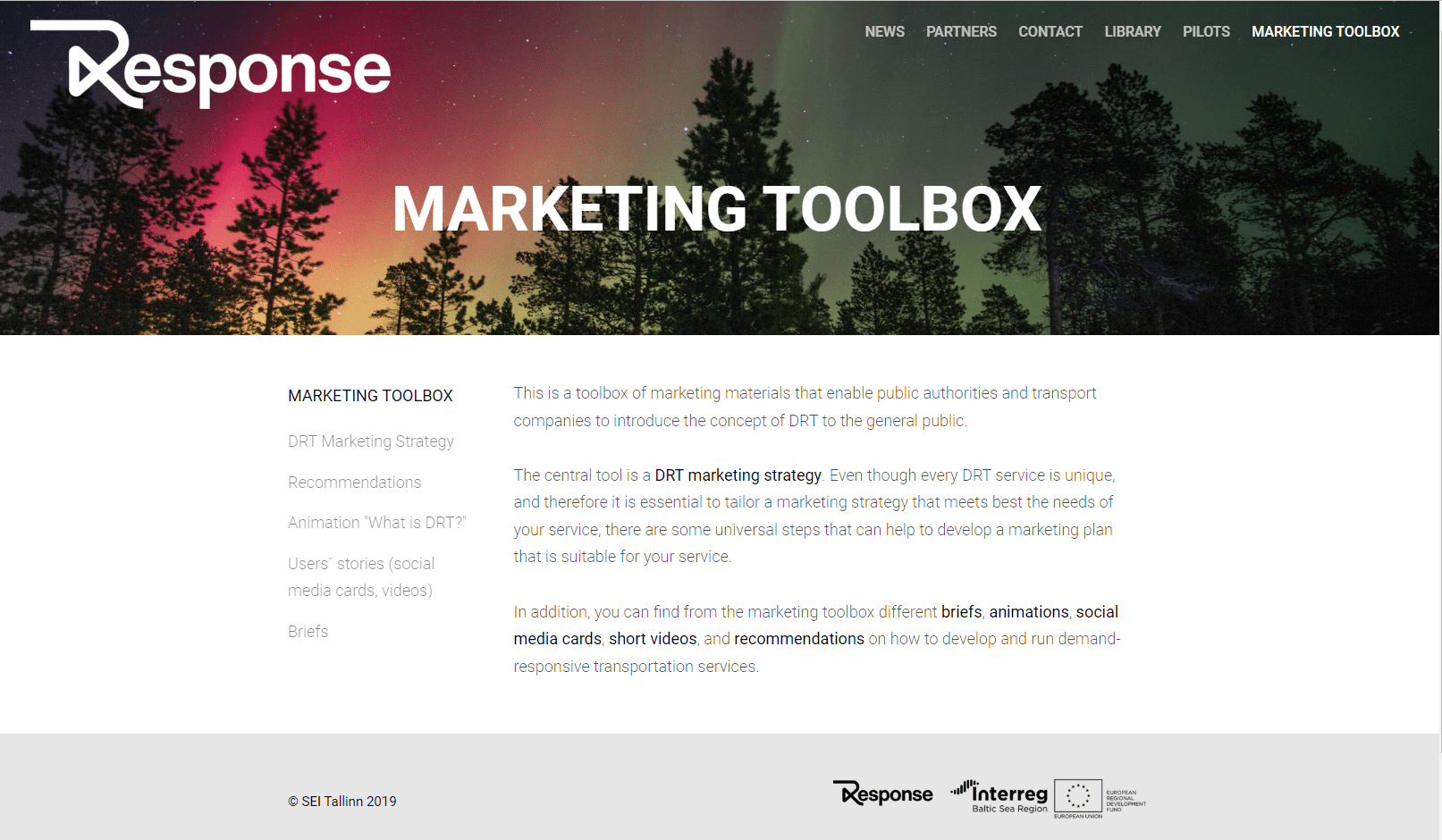RESPONSE
The mobility of vulnerable groups such as the disabled, elderly, minors, and the unemployed is limited especially in the sparsely populated areas in the Baltic Sea region. Regular local services do not meet users’ expectations and are not cost-effective. Public transport is regulated similarly throughout the Baltic Sea region. The public authorities responsible for organising public transport are usually slim organisations that plan and procure the operation of various transport services. The capacity of these public authorities and higher-level decision-making bodies to address central challenges and take advantage of the new trends is largely missing.
Need-oriented service design
RESPONSE helped to shift the approach from supply-oriented to demand-responsive transport solutions by developing according technical solutions. The project showcased how geodata can be used for decision-making by public authorities. It piloted seamless trips, digitalised business models, and need-oriented service design as an alternative to the fixed bus routes.
Budgets
in numbers
-
2.48MillionTotal
-
1.34MillionErdf
-
0.00MillionEni + Russia
-
0.40MillionNorway
Achievements
RESPONSE was formed to increase the capacity and usage of best practices in the public transport sector to take advantage of crucial societal trends – the open data revolution, digitalisation, and demand-orientation. Project piloting tested how publicly funded transport services can link to various actual needs, for instance, after-school activity services.
The project demonstrated how the existing geodata can be made available, visualised and used for evidence-based decision-making in public authorities, including a data warehouse model and a cost prognostication model. The models are technical tools that were developed to help public authorities responsible for planning and managing public transport, mostly on a local level. The tools were designed to better plan the public transport services and adapt to the needs of the citizens.
Besides, the technical tools empowered the policy makers to make choices about service options, community needs, and combined mobility. Several local government authorities have already taken the demand and cost prognostication model into use to test out initial plans for their demand responsive transport solutions and estimate the possible costs of running the services.
Outputs
Technical tools for the application and modelling of demand responsive transportation

Marketing toolbox

Project Stories
Partners
Stockholm Environment Institute Tallinn
- TownTallinn
- RegionPõhja-Eesti
- CountryEstonia
- RepresentativeLauri Tammiste
- Phone
- E-Mail
- Web
SUCCEEDED by PP16 (01.01.2020) Oppland County Council
- TownLillehammer
- RegionOppland
- CountryNorway
- RepresentativeOla Sondre Elgshøen
- Phone
- E-Mail
- Web
SUCCEEDED by PP15 (01.01.2019) Varmlandstrafik AB
- TownMunkfors
- RegionVärmlands län
- CountrySweden
- RepresentativeLena Thorin
- Phone
- E-Mail
- Web
Ruter
- TownOslo
- RegionOslo
- CountryNorway
- RepresentativeClaes Kanold
- Phone
- E-Mail
- Web
Kolumbus
- TownStavanger
- RegionRogaland
- CountryNorway
- RepresentativePer Ivar Aase
- Phone
- E-Mail
- Web
Karlstad University
- TownKarlstad
- RegionVärmlands län
- CountrySweden
- RepresentativePer Echeverri
- Phone
- E-Mail
- Web
Kaunas City Municipal Administration
- TownKaunas
- RegionKauno apskritis
- CountryLithuania
- RepresentativeMindaugas Augustaitis
- Phone
- E-Mail
- Web
Aalborg University
- TownAalborg-East
- RegionNordjylland
- CountryDenmark
- RepresentativeKristian Torp
- Phone
- E-Mail
- Web
Region Värmland
- TownKarlstad
- RegionVärmlands län
- CountrySweden
- RepresentativeLena Thorin
- Phone
- E-Mail
- Web
Innland County Council
- TownHamar
- RegionHedmark
- CountryNorway
- RepresentativeOla Sondre Elgshøen
- Phone
- E-Mail
- Web
-
Project managerMerlin RehemaStockholm Environmental Institute Tallinn
-
Legal representativeLauri TammisteStockholm Environment Institute Tallinn
-
Financial managerHeidi GrenmanStockholm Environment Institute Tallinn
-
Communication managerHelen SaarniitStockholm Environment Institute Tallinn



